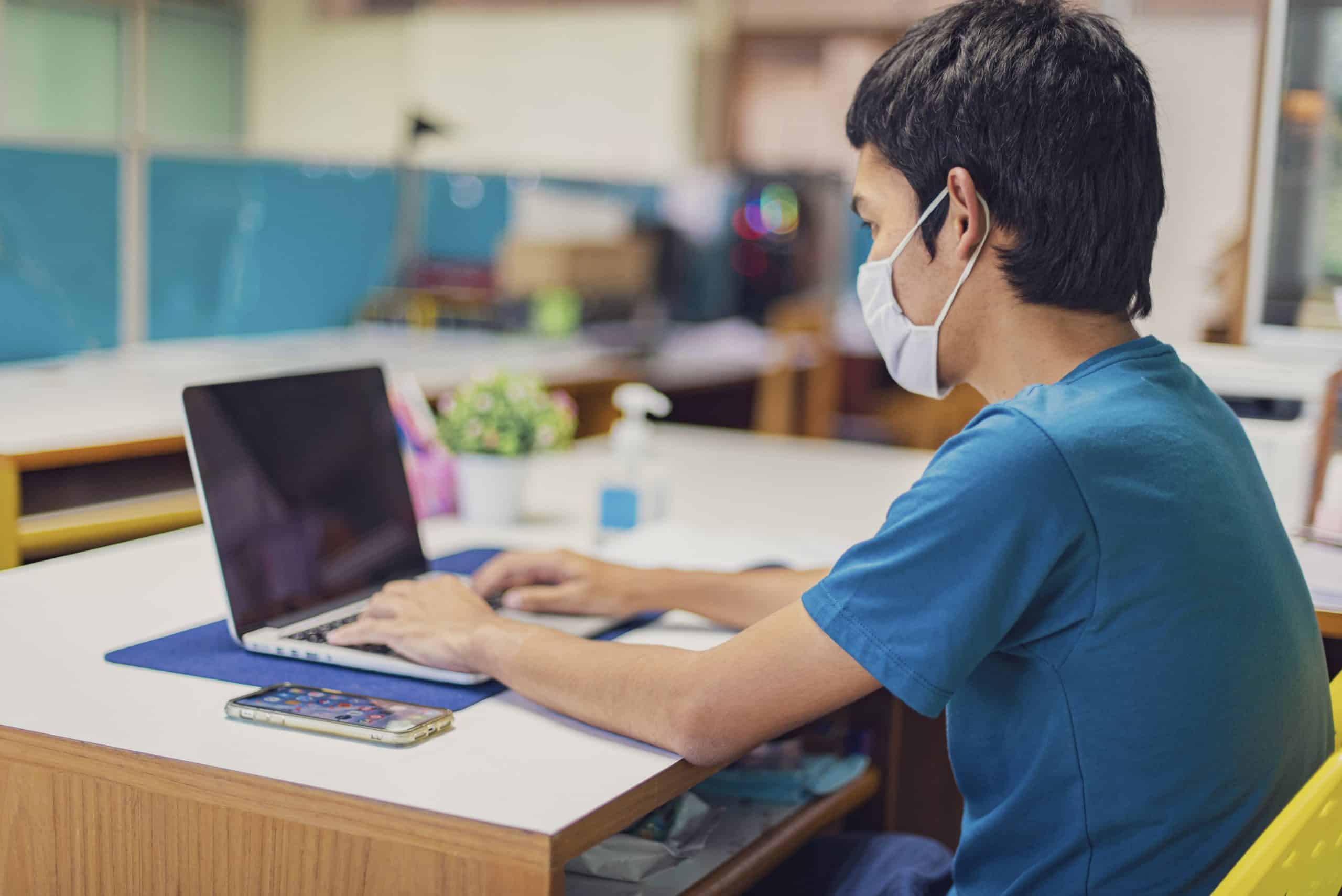
The human resource department is at the forefront once again as a progressive and controlled lockdown exit plan is in place by many governments across the world.
They are responsible to ensure that office spaces adhere to the guidelines issued by various state governments, and address the challenge of providing a safe space to employees who would return to work amidst the emotional insecurity and uncertainty through meticulous measures.
Even though people are now allowed to go back to work, many companies still expect their employees to work remotely through at least a few more weeks or even months.
This article aims at helping employers understand how they can get through this management phase of the crisis and re-organize work while paying close attention to local conditions and changing guidelines & practices.
Here’s a closer look at the questions and their answers as you plan to get your employees back to the office.
Are your employees ready to come to the office?
The first challenge to address for every human resource leader and manager is to know if their employees are willing to return to work.
The chances of employees having anxiety or apprehension about commuting via public transport, returning to work, engaging with people again, etc. are higher as they might have experienced difficult situations during the lockdown.
It is hence ideal to have regular one on one meetings with every employee before they return to work to help them share any concerns they might have and address any worries about their physical and mental wellbeing.
Asking icebreaker questions in meetings is another effective way to understand the emotional wellbeing support required by your employees (counseling, therapies, etc.) and how to schedule a business’ wellness action plan for the coming months.
It is important to ensure connectivity for members of staff who are still self-isolating for their wellbeing and resilience since those forced to work remotely may have faced psychological hazards linked to increased loneliness and isolation.
There are also chances that an employee might have suffered the bereavement of a friend or family member.
Although there is no statutory right to bereavement leave for those who are not in the right emotional state to return to work yet, it is the moral responsibility of organizations to be sympathetic to requests for additional time off, if required.
Home offices must also be supported as part of a long-term solution, wherever possible, to ensure that employees feel heard and taken care of before they decide to set their foot in the office.
Which teams should be coming to office?

An effective way to avoid bias is for employers to enquire directly from employees if they are uncomfortable returning to the workplace and if they wish to continue working from home for a little longer.
Running employee engagement surveys are a great way to get the pulse of your team and make an informed decision based on the results.
After all, the idea is to bring people back in shifts and not everybody together to avoid overcrowding.
Employees at the highest risk for complications of Covid-19 such as those over 60 and those who have chronic lung or heart disease, diabetes, or kidney disease must remain remote or continue working from home until the amount of community transmission is very low.
Similarly, employees with children at home and who lack alternative childcare, or those for whom transport poses a significant risk of exposure should be encouraged to continue to work remotely if possible.
In such cases, however, given the uncertainty surrounding the timeline of the pandemic, strengthening telecommuting protocols must be encouraged.
Making the technology environment more agile will help businesses switch back to a flexible mode very quickly. Companies must further accelerate adopting remote-collaboration apps, flexible cloud solutions, and high-performance networks to ensure a better connection between all team members.
Another way to ensure a smooth transition is to bring back the facilities teams, followed closely by the IT teams to get the workplace ready, set up desks, and sanitize equipment.
Right time to open offices & the first few days
It is advisable to consider appointing a Covid-19 Control Plan Coordinator, before reopening offices, who can be accountable for the hygiene plan and employee transition.
Covid-19 Control Plan Coordinator must also be responsible for keeping track of updates from public authorities on Covid-19 and making this information available to the employees with regards to the changes in the office.
Since office buildings are prime places for diseases like this to spread, and most have to pass through common entry points like security checkpoints, lobbies, and elevators, there must be additional safety protocol measures to provide a safer work environment for employees from the moment they enter the premises.
1 Before reopening offices you must,
- educate the staff on the signs and symptoms of Covid-19 through emailers, posters, live sessions, etc. Also, dedicate additional HR resources to answer any questions about what to do if they are exposed to someone who is sick or becomes ill,
- consider implementing flexible sick time policies or additional sick leaves to accommodate employees who are sick with symptoms or who test positive for coronavirus,
- suspend or limit business travel and follow proper self-isolation and quarantine procedures for any employee who does travel,
- consider installing high-efficiency air filters and better ventilation systems to reduce the viral load in workplace interiors,
- consider all the high-traffic areas and touchpoints of the facility to identify where and how coronavirus could be transmitted: workstations, keyboards, telephones, handrails, door handles, elevator buttons, lobbies, light switches, bathrooms, break rooms, and shared offices. Plan prior to reopening the office to alleviate risk in these areas with additional cleaning and disinfection, and as a new normal routine going forward,
- eliminate porous surfaces and fabrics throughout the office such as lobby chairs, carpets, wall tapestries, etc. that can harbor coronavirus particles for up to a week without sanitization, and,
- give employees a reasonable period of notice for when they will be expected to return to ‘normal’ work conditions as many will need to plan for childcare or adjust working hours if schools have not reopened.
2 Encourage temperature checks for visitors entering the building.
Since most people are asymptomatic, couple temperature checks and scanning with questioning returning employees to know whether they have a known exposure, a sick family member at home, or any other phy
sical symptom.
3 Encourage contact tracing to help track, report, and isolate cases of coronavirus should it affect anyone in the office or building.
4 Since public transportation is yet to commence in many cities, arrange for alternative transportation plans if the employees are reluctant to public transportation upon return to work.
5 To support employee hygiene, it is advisable to keep tissues, hand sanitizer, disinfectant wipes, soap, etc. readily available for all employees.
6 To minimize physical contact for employees who are at a high-risk for contracting the virus it is recommended that employees wear face masks that cover the nose and mouth or personal protective equipment (PPE) while in the office.
7 Create flexible worksites that accommodate remote work and telework by allowing fewer people in the office, reducing on-site meetings, discouraging shared equipment or workstations, discouraging visitors unless necessary, etc.
8 Reconfigure worksites to add more distance between employees by keeping desks six feet apart. Physical barriers and floor decals can be used to help guide employees or customers on where to walk to maintain the recommended distance.

9 Encourage flexible work schedules to minimize the number of employees in a space at one time by implementing daily staggered shifts, or have a part of the staff work remotely for one week, then come into the office the next week.
10 Along with physical sanitation also consider digital sanitation that weeks of remote working might have caused. Since the same devices that employees used for downloading software, video games, etc. are going to be connecting directly into the company’s corporate network it is necessary to make sure that they are clean and free of malware. This will ensure hardware security, preserving multi-factor authentication, and keep VPNs up and running.
11 Invest in automated and voice-activated technology to eliminate daily operations from a personal device throughout the workspace. Moreover, securing the system via encrypted technology on the cloud keeps security risks low and offers greater flexibility for administrators.
12 Increase security measures to be aware of who is entering the facility, being able to track this data in real-time and react swiftly in case of an emergency.
Role of communication: What leaders can do?
Anxiety often stems from the unknown, making a person focus on problems before they have happened.
Amidst the uncertainty, communicating actionable steps on how the business is planning to safeguard their employees’ health, how can employees protect themselves when back in the office, and addressing similar questions will help rationalize this issue.
To ensure company health protocols are clear and accessible, it is important to keep everyone informed on the steps taken as a business and giving advice on how to stay hygienic and safe around others.
Along with, business recovery is a key stage, and leaders must monitor the effectiveness of the return to work program to make sure that it remains effective and supportive of those who have returned to work.
Reviewing lessons learned from the outbreak and updating a Business Continuity Plan will also bring some structure to the return to work program.
It is also necessary to acknowledge how every manager kept teams engaged through extra effort to communicate with employees who were stuck at home during the lockdown. The same rule must be applied to staff returning to work to level the playing field between those who are remote and those who are in the office.
While this is traditionally seen as a challenge for businesses experimenting with telecommuting, it can also benefit businesses, in the long run, if processes around communication and collaboration are made effective.
Senior managers and team leaders should also give employees plenty of time to familiarize themselves with working in an office again, however, with restrictions.
Every small thing like traveling to work, sharing a space, re-connecting to corporate networks, setting up office workspace, etc. will require re-adjustment.
Re-orientation processes and setting up regular one on one meetings to check-in on employees will play a crucial role here to address any emotional and physical need or query that an employee might have.
Effective One on One Meetings
We built a software that automatically schedules, lets you set agenda, take notes, exchange feedback and track actions – all in one place.
An important point to consider here is that a fair section of the workforce will not be coming back to the office anytime soon for a wide range of different reasons.
Where Should Managers Have One on One Meetings?
Summing up
It is crucial that companies avoid making the biggest mistake to force people to show up to work.
Being empathetic and easing out fears can be beneficial for companies and leaders alike to prioritize the physical and mental safety of employees and encourage trust.
While all these factors may seem daunting to adjust after Covid-19, it is vital to approach the return to work program with an abundance of caution to ensure both employers and employees are prepared for a post-coronavirus work environment.






